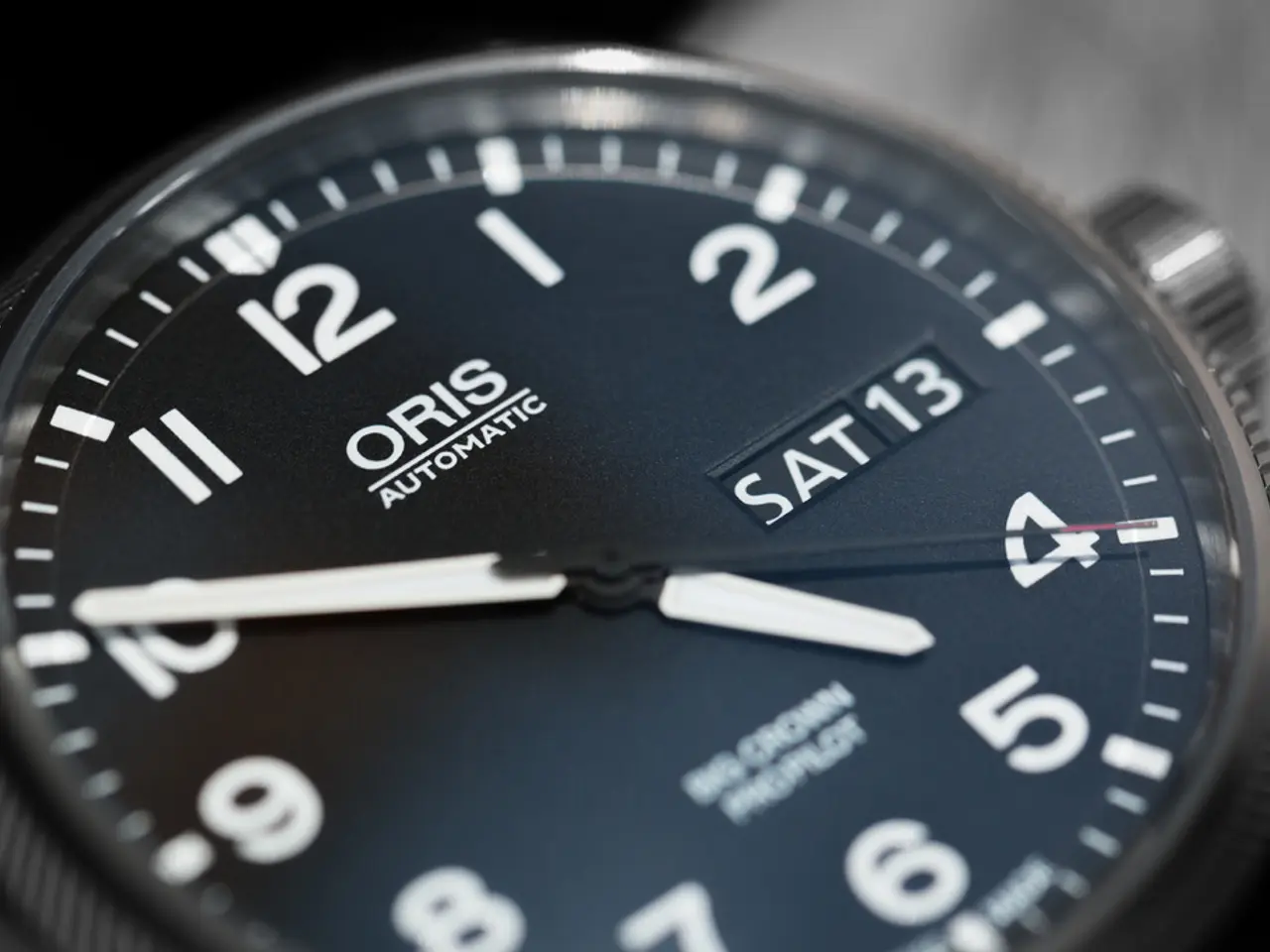Top-notch Blood Pressure Tracking Smartwatch
In the realm of wearable technology, smartwatches have made significant strides in the health sector, with blood pressure monitors being one of the latest additions. These devices offer a convenient way for individuals to keep track of their daily calorie consumption and blood pressure readings.
However, it's important to note that while these smartwatches provide a useful tool for trend monitoring and alerts, they are not yet a full replacement for traditional cuff-based blood pressure measurement devices.
A clinical validation study on acute ischemic stroke patients showed that a smartwatch using photoplethysmography (PPG) sensors had a mean difference of about 1.8 ± 5.6 mm Hg in systolic BP and 0.7 ± 3.6 mm Hg in diastolic BP compared to a standard sphygmomanometer. This meets international accuracy standards for medical devices.
Most current cuffless smartwatches rely on PPG and pulse transit time (PTT) technologies, which estimate blood pressure by measuring blood flow and pulse wave velocity under the skin. While these methods produce reasonable estimations, they can be affected by movement, improper sensor placement, and require careful calibration to individual users.
The Omron HeartGuide, the only blood pressure monitor watch with clearance from the Food and Drug Administration (FDA), uses an inflatable cuff integrated into the watch band, offering accuracy closer to traditional arm cuff monitors. Other cuffless devices are still being validated and are better suited for trend tracking than diagnostic purposes.
Smartwatches offer the advantage of continual, convenient monitoring and long-term blood pressure pattern observation, which can aid in hypertension awareness and management. However, their readings can be less reliable during exercise or in certain physiological conditions, and improper readings may lead to misinterpretation of hypertension status.
These devices are not cheap, with prices ranging from moderate to high. For instance, the Omron HeartGuide is priced on the higher end, while the FitVII GT5IP68 SmartWatch, one of the most affordable options, caters to budget-conscious consumers.
Hypertension is a common condition among American adults, making self-measured blood pressure monitoring important. In addition to blood pressure monitoring, these devices also track multiple health metrics such as heart rate, sleep patterns, body fat, basal metabolic rate, and body water.
The Samsung Galaxy Watch 5, another popular choice, measures blood pressure using pulse wave analysis and also tracks heart rate, sleep patterns, and fitness activities. The YHE BP Doctor Pro, an all-in-one health management smartwatch, measures blood pressure, blood oxygen saturation, heart rate, and sleep patterns, and also functions as a fitness tracker.
While these devices have received positive reviews for their accuracy, some users have found the accompanying apps difficult to use. Despite this, the convenience and potential health benefits offered by these smartwatches make them an attractive option for many.
For diagnosis and treatment decisions, conventional cuff measurements remain the gold standard. Users should consider smartwatch BP readings as supplementary health information rather than diagnostic, and confirm important findings with standard measurements and physician consultation. Calibration, sensor stability, and proper use are critical for best accuracy with smartwatch BP monitors.
Moreover, these devices can also be beneficial for individuals with low blood pressure (hypotension), helping them monitor their condition and take necessary precautions.
In conclusion, the current state of smartwatch blood pressure monitors is that they provide convenient, generally accurate readings suitable for monitoring trends and alerting users but remain less precise than traditional validated arm cuff devices used clinically. For those seeking a convenient way to monitor their health, these devices offer a promising solution. However, it's crucial to approach the readings with a degree of caution and to consult with healthcare professionals for accurate diagnosis and treatment.
[1] Clinical validation of a smartwatch for blood pressure measurement in acute ischemic stroke patients [2] Accuracy of smartwatch blood pressure measurements compared to sphygmomanometer in hypertensive patients [3] Blood pressure measurement using a smartwatch in patients with heart failure: a systematic review and meta-analysis [4] FDA-Cleared Wearable Blood Pressure Monitors: A Systematic Review [5] Consumer smartwatches and health trackers: A review of their health monitoring features and accuracy
- While smartwatches with blood pressure monitors offer convenient ways to keep track of health trends, it's crucial to remember their readings are not yet equivalent to traditional cuff-based measurements.
- A study on acute ischemic stroke patients validated the accuracy of a smartwatch using photoplethysmography (PPG) sensors, but it indicated a mild difference compared to a standard sphygmomanometer.
- Most current cuffless smartwatches use PPG and pulse transit time (PTT) technologies that estimate blood pressure by measuring blood flow and pulse wave velocity under the skin.
- The Omron HeartGuide, FDA-cleared and using an inflatable cuff in the watch band, offers blood pressure readings that are closer to traditional arm cuff monitors.
- Smartwatches offer the advantage of continuous, convenient monitoring for hypertension awareness and management, but their readings can be less reliable during exercise or in certain physiological conditions.
- These devices can be less affordable, with prices ranging from moderate to high, making them a potential option for budget-conscious consumers.
- In addition to blood pressure monitoring, these devices also track multiple health metrics, including heart rate, sleep patterns, body fat, basal metabolic rate, and body water.
- For diagnosis and treatment decisions, conventional cuff measurements remain the gold standard. Users should use smartwatch BP readings as supplementary information and consult physicians for accurate diagnosis and treatment.
- Smartwatch blood pressure monitors can also benefit individuals with low blood pressure (hypotension), helping them monitor their condition and take necessary precautions.




